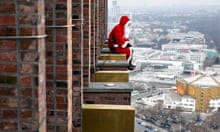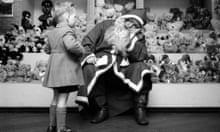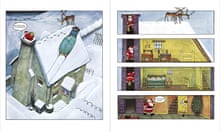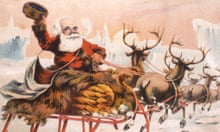Santa-denial has surfaced again, this time on Australian television show The Project, in the guise of its guest Kitty Flanagan. It’s just the latest in a long line of controversies caused when Santa deniers are allowed to promote their views.
Why are these people tolerated in today’s modern media? Science has long shown that Santa Claus is real, and those who claim otherwise are invariably in the pocket of the big toy companies, who don’t want people thinking they can get free playthings and so will pay for their products.
But the evidence is beyond any reasonable doubt, and the arguments of the Santa deniers have been repeatedly debunked. But, just to refresh your memory, here are some of the more typical ones and why they’re wrong:
If Santa has a workshop at the north pole, why has nobody ever seen it?
Santa’s workshop is located in a very snowy region that very few people can access, so it’s unlikely that many people would get to see it. It would theoretically be possible to view it from above, via an aircraft or satellite in a polar orbit, but what would Santa’s workshop look like from this perspective? A snow-covered building on a background of ice and snow? That’s basically just blank whiteness. And infrared scans can be tricky with snow.
It’s a fallacy to assume that something isn’t there because you haven’t seen it. You can’t see oxygen either, but try denying that it exists and see how far you get.
How can a human survive prolonged periods in sub-zero conditions?
Santa has several features and properties clearly adapted for cold weather survival. His large girth and dense beard and hair are obviously meant for insulation, in the manner of polar bears. Of course, enduring below-freezing temperatures for months on end requires a lot of calories for a warm-blooded mammal, hence Santa needs to get through millions of mince pies and glasses of milk in one evening; he’s building up resources for another frosty year.
How is it possible for a sleigh with millions of toys in it, pulled by reindeer, to fly?
Admittedly, the whole “flying reindeer” thing does seem very far-fetched, and this is a fair accusation. Investigations suggest that the flying reindeer image is a distortion of the truth, in that reindeer are native to the Arctic so Santa may well keep reindeer on his premises and perhaps they did pull his sleigh originally. But there is substantial evidence now to suggest that Santa powers his sled with the energy obtained from a precisely controlled quantum singularity. Basically, Santa has access to a small black hole, which he uses to perform his duties.
It’s likely that a miniature black hole struck Earth at some point in the past (don’t worry, this wouldn’t have been as disastrous as many think). Some argue that it came down in the arctic regions, hence its discoverer (Santa Claus) built his workshop on top of it. A black hole singularity can provide a lot of power, so this is the most likely explanation for the energy consumption of a busy workshop.
Once a year, Santa fits the singularity to his vehicle and uses it to travel the world. Black holes have exotic properties that allow them to distort space and gravity, so travelling with millions of toys in a confined space won’t be as impractical as it would be under normal spacetime rules.
It’s impossible to visit every child on Earth in a single night!
You’d think so, but remember the singularity mentioned above? They distort time too. The time period might feel like months for Santa in his own personal gravity well, but it’s mere minutes to anyone observing from the outside.
How can Santa keep track of every child being naughty or nice?
As uncomfortable to realise as it may be, Santa’s approach hasn’t always been the most rational. It is traditional for every child to send Santa a gift list they have written themselves, so in the old days Santa was able to use the questionable science of handwriting analysis to determine who had less-than-pleasant personality traits (along with some educated guesswork based on the list itself; a child who asks for live scorpions or chainsaws is likely to have suspect motivations).
However, with the arrival of the internet and surveillance culture, it’s relatively easy to keep track of everyone. Especially if you’re a powerful industrialist like Santa.
Why does Santa deliver toys and items with the branding of corporations?
Outsourcing! Duh. Plus, most children these days ask for specific items made by corporations, who jealously protect their copyrights by legal means. So either Santa sources the toy from the original makers, or the child goes without. Is that what you want, Santa deniers? Children waking up empty-handed on Christmas morning? Despicable!
Why are there so many Santas in shops and grottos?
Those aren’t all Santa. They’re men in costumes. How gullible are you?
Dean Burnett wrote this after being visited by three ghosts who shouted at him in the night. He spreads festive cheer on Twitter @garwboy




